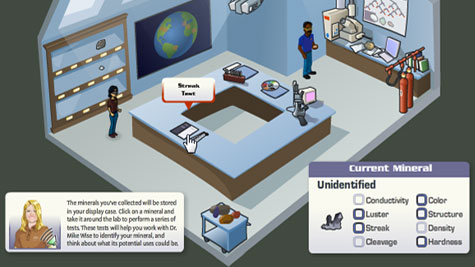Nancy MacIntyre spoke about the power of partnerships during her session at Casual Connect USA 2014. “Partnerships build bridges between brands, consumers, and developers,” she said.
Nancy MacIntyre, the founder and CEO of Fingerprint, became interested in the games industry while working at Lotus Development in a sales and marketing role. One day, she stumbled into Electronics Boutique thinking they might be a good distribution partner for them. She remembers thinking then that games might become as big as video tapes. She went on the get a job at Broderbund Software, followed by Atari and LucasArts.
Founding Fingerprint and receiving Series B funding from DreamWorks brought the most satisfying time of her career. It came through having a wonderful initial group of investors, employees, developers, and customers who all bought into the dream. MacIntyre finds the games industry to be an interesting mix of magic, rocket science, fun factor, and business, so it attracts people who are magicians, rocket scientists, fun, and suits, and she likes the mix. Today, she is getting a lot of enjoyment from working with developers to bring their games to life on mobile.
She continues to appreciate the ever-changing nature of the industry. “There’s always a new platform, new business model, new innovation. The intellectual challenge keeps me hopping, and I love games. But if I weren’t in the industry, obviously I’d be a host on The View.”
Combining Innovation with Fun
The mission at Fingerprint is to create fun mobile content and to provide an innovative platform where family and friends can connect together to learn and play. She insists, “The family market always evolves, from books and board games to tablets and smartphones, but the human experience will always remain social.” So Fingerprint has designed a way to transition this parent/child engagement into the digital world. In addition to finding and partnering with great developers, they have established a platform the enables other brands to deliver their own mobile kid-friendly app networks. So far, they have done this with a number of brands, including Sylvan (SylvanPlay), Astro, and Samsung (Kids Time). The technology they are implementing is scalable for broader content with brand partners in other categories, so the potential for expansion and growth is tremendous.
Obsessing Over the Possibilities
While MacIntyre was working at LeapFrog Enterprises, she and her colleagues often worried about kids getting older, leaving toys, and being more interested in buying video games. She relates, “One day at a coffee shop about a month after the iPhone came out, I saw a mother hand her expensive smartphone to her toddler. I knew then that the real competition would be every mom with an iPhone in her purse, giving instant access to play everywhere.” She noticed the sticky fingerprints on the screen and became obsessed with the possibilities of touch screen devices. She left the company to create Fingerprint, and the brand was born. From there, she brought on board a number of other talented people with similar visions, including two with experience at PlayFirst, Disney, and Frog Design.”
She has learned that to succeed, you must be nimble and smart, and surround yourself with smart people. She emphasizes, “Know if something is working or needs revising. Stay close to your best counselors who are as invested as you are.” She has also learned to only do things that move the ball up the field with partners, consumers, investors, and the team. If the activity doesn’t check off one of those boxes, don’t do it.
Choosing A Different Path
Finally, she learned that to succeed as an entrepreneur, you must create something no one has or do it better than anyone else. You must recognize when things need to morph and do it, and make sure the team understands why. She feels being nimble is one of the most underrated skills.
She notes that today, children everywhere are immersed in their devices, and parents are becoming increasingly aware of how much screen time is consuming their lives. There is a growing trend of parents trying to make that screen time more productive through apps that educate as well as entertain. Educators are also embracing mobile apps for learning. For this reason, greater numbers of developers are shifting to edutainment apps to meet these consumer needs. MacIntyre believes the industry will continue to evolve to meet the needs of both parents and educators, while finding even more ways to keep children engaged and entertained.
For her personal gaming, she focuses on mobile, since there are so many great games. She loves to have her games and everything else on iTunes in one account and playable on all her devices. She has played while getting a root canal and while on a ski lift, proving games can be played with either a numb mouth or numb fingers. Currently, she is playing Sonic Jump for iPhone; she has a soft spot for Sonic because it was the first game she played all the way through. She also has the original Wii and Xbox 360. She finds the party games on Wii are still great fun and excellent for friends who aren’t really gamers. But she hasn’t yet found any reason to upgrade.
When not involved with games, MacIntyre is an avid consumer of media, especially books and movies. She also loves playing tennis, skiing, and going to the beach.




















